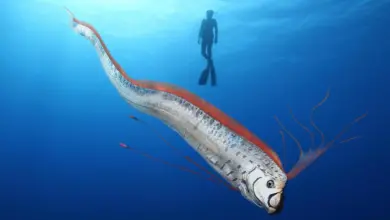What They Discovered In Chernobyl Terrified The World

1. **Chernobyl’s legacy of horror:**
After the 1986 nuclear explosion, the area around Chernobyl was frozen in time, becoming a haunted forbidden zone. Terrifying and surprising discoveries continue to emerge here.
2. **Abandoned Pripyat Hospital:**
This hospital was once a place to treat workers and firefighters who were heavily irradiated after the disaster. In particular, the hospital’s basement, which contained their radiation protective suits, still emits deadly levels of radiation, making this one of the most dangerous areas.
3. **Giant Catfish at Chernobyl:**
Catfish up to 6 feet long have been discovered in cooling ponds near the plant. Although their unusual size has led many to associate them with mutations caused by radiation, scientists believe that the lack of natural predators is the main reason they have grown so large.
4. **Avanhard Stadium “swallowed” by nature:**
The football stadium in Pripyat, once a source of community pride, is now abandoned, with grass and trees growing over the pitch and stands. The sight of the forest covering the entire field creates a feeling of both majesty and haunting.

5. **Canteen 19:**
This place still operates to serve meals to scientists, workers and visitors in the restricted area. Although the menu includes traditional Ukrainian dishes, the surrounding scenery gives a sense of insecurity.
6. **Chernobyl’s “Elephant’s Foot”:**
This deadly mass of radioactive material, formed from the melted reactor core, remains one of the most dangerous objects on the planet. At the time of its discovery, standing near it for just a few minutes was enough to cause death from radiation exposure.
7. **Radioactive milk:**
Cow’s milk from areas near Chernobyl still contains Cesium-137, a radioactive substance that exceeds the safe level by up to five times, posing a great health risk, especially to children.
8. **Atomic” vodka:**
A team of scientists created vodka from ingredients in the restricted area, distilling it to remove most of the radioactivity, and proving that it is as safe as any commercial vodka.
9. **Abandoned children’s toys:**
The dolls and stuffed animals in the kindergarten in Pripyat are haunting memories of an unfinished childhood, when children were forced to leave this place forever after the disaster.
10. **Wildlife Resurgence:**
Without humans, many animals such as the Eurasian lynx have returned and thrived in the Chernobyl area, turning it into an unusual “wildlife paradise” in a radioactive environment.
#### Eurasian Lynx*
The lynx, with its distinctive tufted ears and thick fur, has re-colonized the forest habitat of Chernobyl. Lynx are solitary predators, preying on small and medium-sized animals such as rabbits and deer. The abundance of deer in the area has played a major role in the species’ resurgence.
#### Albino Swallow *
The albino swallow in Chernobyl is notable for its unusual white colour, which is the result of a genetic mutation that prevents it from producing melanin. However, the white colour makes it easier for predators to spot and harder to catch. The bird represents the potential effects of radiation on evolution and adaptation in nature.
#### Red Forest**
The forest near the nuclear power plant was exposed to extremely high levels of radiation, causing the trees to turn a reddish colour before they died. The area was later used as a radioactive waste dump. The Red Forest is a clear demonstration of the destructive power of radiation and the resilience of nature.
#### Strange animal phenomena:**
– **Headless deer:** A video recording a headless deer moving near the railway tracks, raising questions about the effects of radiation on animal health.
– **Black frog** The Eastern Tree Frog changes from green to black to adapt to the radioactive environment. Scientists believe that this new color may help them protect their bodies from radiation damage.
– **Super-tolerant worms:** The Panagis Red Aivas worm thrives in highly radioactive environments without suffering cell damage, attracting the attention of scientists about its unique biological adaptation mechanism. #### Fox makes sandwich *
A clever fox in Chernobyl surprised everyone by arranging bread and meat into a sandwich before eating it, showing its remarkable ability to learn and adapt to new environments.
#### **The Stalkers **
A group of young people, including amateur photographers and historians, ventured into the Chernobyl area to explore and capture the beauty in the ruins. They faced the risk of radiation and often used radiation measuring devices to ensure safety.
#### **The Tragedy **
The haunting story of a woman in her 30s who was severely exposed to radiation when she approached the plant shortly after the explosion. After several weeks, severe symptoms such as skin lesions began to appear. She suffered from prolonged pain due to radiation poisoning, becoming a symbol of human suffering after the disaster.
### **Conclusion:**
The stories and phenomena from Chernobyl not only reveal the devastation of the nuclear disaster but also demonstrate the powerful adaptation and regeneration of nature, mixed with unexplained mysteries.








